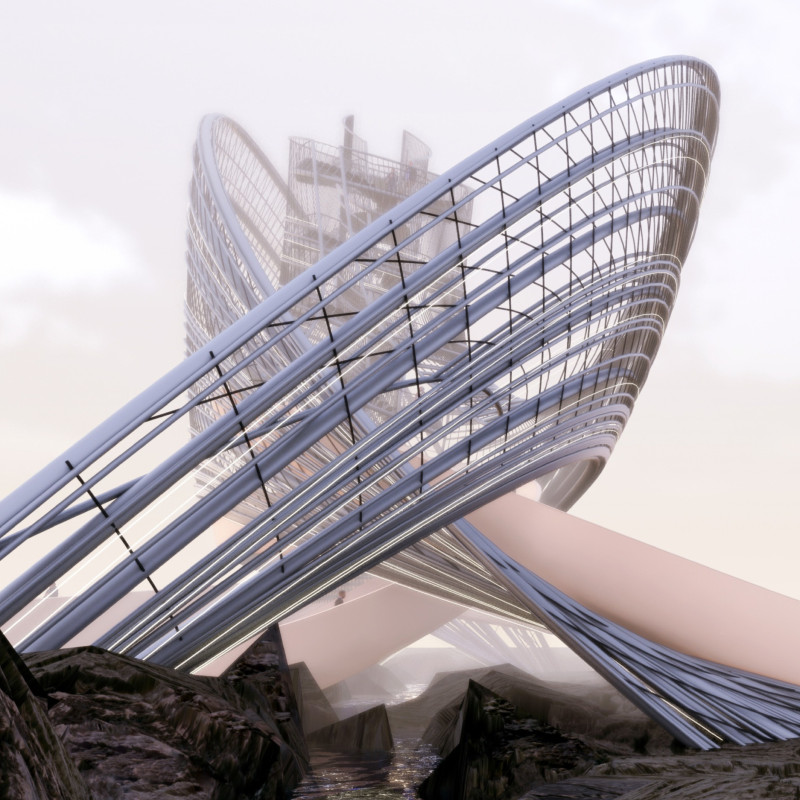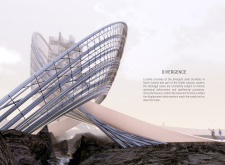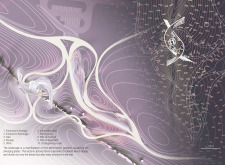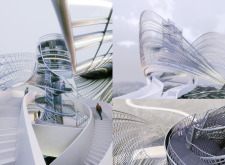5 key facts about this project
The design sits within the Krafla volcanic system in North Iceland, a location defined by its unique geology and geothermal activity. It engages with the environment in a thoughtful manner, taking inspiration from the nearby Grjótagjá caves. These caves are characterized by constant geological change, serving as an important point of reference. The project aims to connect human activity with the landscape, reflecting the ongoing tectonic movements that shape the area.
Interlocked Shell Structures
Two shell structures form a central part of the design. These interlocked forms represent the North American and Eurasian tectonic plates, visibly embodying the process of plate divergence. This design choice creates a strong link to the surrounding geology and showcases the relationship between the architecture and the land.
Dynamic Spatial Organization
Access to the project is designed to be both functional and intuitive. Visitors move through the site using a ramp or stairway that gracefully arches over the gorge. This design protects the cave's natural integrity while providing clear views of the landscape. The arrangement of spaces encourages exploration and interaction with the geothermal features, enhancing the experience of the site.
Geological Interaction
The approach taken in the design reflects a clear understanding of Iceland's geology. The forms created mirror the deformation gradients produced by tectonic activity in the region. By doing so, the architecture communicates the natural forces at work while maintaining a connection to the site’s distinctive characteristics. The narrative of geological interaction invites visitors to engage with the land in a meaningful way.
Natural Composition Preservation
A key focus of the design is preserving the natural landscape. The structures are carefully placed to avoid disrupting the stability of the surrounding terrain. This attention to preserving ecological systems shows a commitment to sustainability. The result is an arrangement that respects the volcanic environment while allowing for human engagement with the natural world.
The design ultimately creates an experience that encourages visitors to consider the geological processes that shape the land, fostering a greater appreciation for the unique natural beauty of Iceland.






















































